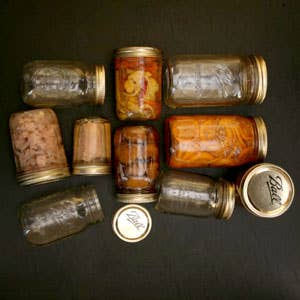
Well Preserved
When my grandfather retired from his job as the manager of a Gerber baby food plant in Asheville, North Carolina, in 1983, he received a parting gift of 48 glass canning jars from the Ball Corporation, which had long supplied Gerber with its baby food jars. Etched into each jar, beneath the cursive Ball logo, were the dates of my grandfather's 37 years of employment. On the back was an inscription to my grandparents: "John & Pat Good Luck!" The jars have remained in my family for 25 years, and they've seen plenty of use. Working on the canning recipes for "Urban Harvest" (issue 113) got me thinking about the history of these iconic kitchen vessels, often called mason jars (after John L. Mason, who patented the screw-top, sealable jars, in 1858). The Ball jar was first mass-produced by the Ball Brothers Glass Manufacturing Co. of Buffalo, New York, in 1884; by 1910, the company was turning out tens of millions of jars a year. Ball sold its glassmaking division in 1993. Over the decades, the jars' design and composition have varied, from the original blue and amber glass varieties to the current thermal-shock-resistant kind made from flint glass. Such subtle changes in appearance are avidly tracked by people like Bruce W. Schank, the 54-year-old creator of www.balljars.net, a website for Ball jar collectors. "The Ball jar is the same thing as mom and apple pie," says Schank. Well, sort of: a jar dating to the 1880s is expected to fetch as much as $25,000 at a private auction this summer.
Keep Reading
Continue to Next Story










